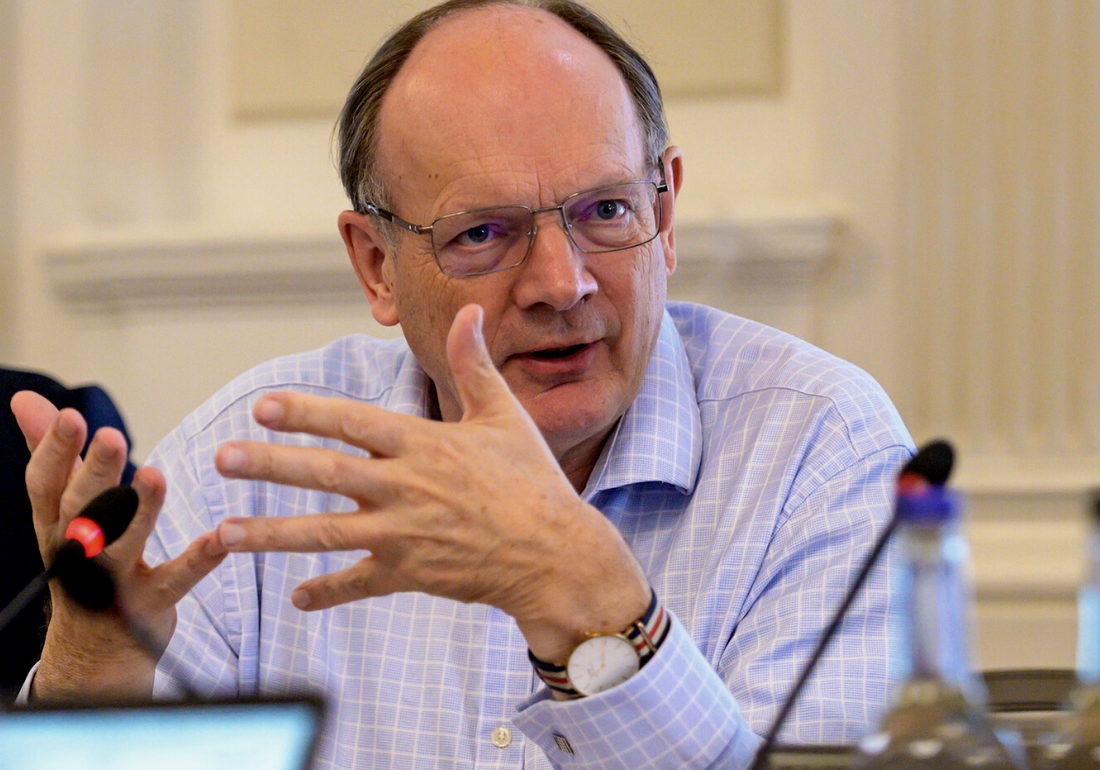In October, we posed 9 new challenges to the research community, each with the potential to change the way we think about cancer. Through our new blog series, members of our Cancer Grand Challenges Scientific Committee reflect on where a global, multidisciplinary team could take us with each challenge. Here, Professor Sir David Lane shares his thoughts on macromolecules.
To me, this challenge is the culmination of a huge effort that’s helped us define the molecular basis of cancer. We have identified these absolutely clear genetic drivers of the disease – RAS, MYC, the loss of p53, which I’ve worked on for many years – but as yet, have no way of targeting them in vivo.
Overcoming the challenge of macromolecule delivery would unlock a whole new type of medicine, not just for cancer, but for a range of diseases. We’re currently restricted – we have large molecules like antibodies that can be used to target cell-surface molecules with high efficacy but can’t penetrate cells, and we have small molecules that can reach intracellular targets but often have off-target effects. But there’s huge promise if we could bridge that gap and deliver into cells drugs that are large enough to have the desired level of specificity. Solving this challenge would potentially unlock multiple new intracellular targets.
What excites me the most is the final hurdle of getting the drug across the plasma membrane. We’ve seen significant signs of progress in this area, and we’re learning that the membrane isn’t the absolute barrier we thought it was for molecules over a certain size. The MYC-targeting Omomyc protein, for example, displays remarkable, unexpected cell-penetrating properties. We’re starting to see amazing evidence that the diphtheria toxin can be engineered to carry surprisingly large proteins through pores in the endosomal membrane. And considerable advances in the delivery of mRNA-based approaches are being used to unlock the precise targeting potential of mRNA in the field of vaccinology, enabling us to exploit this technology for a COVID-19 vaccine and offering further proof-of-principle for the investigation of macromolecules.
Another new, exciting development is the ability to engineer potency. If you only need to transfer a few molecules into a cell, the challenge of delivery seems much more manageable. For instance, the recent approach of molecular glues or PROTACs to bring about targeted protein degradation relies on catalysis rather than target-binding, meaning fewer molecules need to be delivered into the cell and a lower dose can still be effective.
The macromolecules challenge touches on several different issues, which is why a new multidisciplinary effort is needed to broaden our approach and bring fresh thinking to the field. We need a fundamental understanding of cell biology, molecular biology, virology, so we can harness key biological mechanisms. But I’m also a great believer that everything in science is about measurement – how else do you know if the drug engages its target, or whether it’s better than an alternative approach? I’d love to see more comparative work done, more model building, to apply quantitation methodologies from physics and recent developments in the technology of measuring cell uptake and target engagement using mass spectroscopy. I’m always struck by how much science can progress following advances in technology, and when people are encouraged to bring their different strands of investigation together to take a more holistic view of the problem they are trying to solve.
In a way, we’re missing a discipline: the science of ensuring your drug gets to its target. Imagine if we could engineer a new mechanism – be that learning from the delivery of the diphtheria toxin, harnessing nanotechnology or something entirely new – to beautifully deliver macromolecules to their target. Clearly a number of hurdles remain, which need holistic, focused consideration, but I don’t think we’re infinitely far away from where we need to be. And the potential is enormous.
Learn more about the macromolecules challenge. For details on how to apply, click here.
